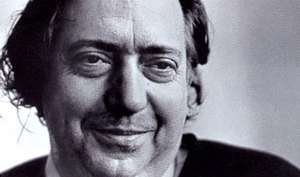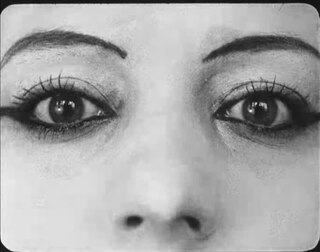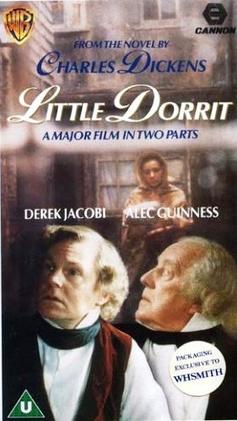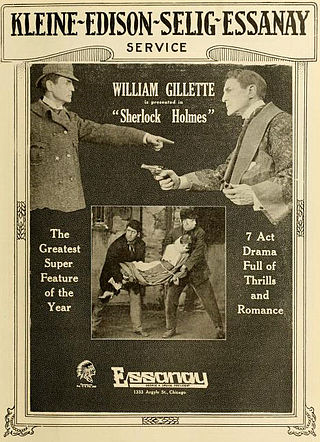Related Research Articles

Henri Langlois was a French film archivist and cinephile. A pioneer of film preservation, Langlois was an influential figure in the history of cinema. His film screenings in Paris in the 1950s are often credited with providing the ideas that led to the development of the auteur theory.

Pink Floyd: Live at Pompeii is a 1972 concert film directed by Adrian Maben and featuring the English rock group Pink Floyd performing at the ancient Roman amphitheatre in Pompeii, Italy. The band performs a typical live set from the era, but there is no audience beyond the basic film crew. The main footage in and around the amphitheatre was filmed over four days in October 1971, using the band's regular touring equipment, including a mobile 8-track recorder from Paris. Additional footage filmed in a Paris television studio the following December was added for the original 1972 release. The film was then re-released in 1974 with additional studio material of the band working on The Dark Side of the Moon, and interviews at Abbey Road Studios.

A trailer is a commercial advertisement, originally for a feature film that is going to be exhibited in the future at a movie theater or cinema. It is a product of creative and technical work.

Experimental film or avant-garde cinema is a mode of filmmaking that rigorously re-evaluates cinematic conventions and explores non-narrative forms or alternatives to traditional narratives or methods of working. Many experimental films, particularly early ones, relate to arts in other disciplines: painting, dance, literature and poetry, or arise from research and development of new technical resources.

Empire is a 1965 American black-and-white silent art film by Andy Warhol. When projected according to Warhol's specifications, it consists of eight hours and five minutes of slow motion footage of an unchanging view of New York City's Empire State Building. The film does not have conventional narrative or characters, and largely reduces the experience of cinema to the passing of time. Warhol stated that the purpose of the film was "to see time go by."

The Cinémathèque française, founded in 1936, is a French non-profit film organization that holds one of the largest archives of film documents and film-related objects in the world. Based in Paris's 12th arrondissement, the archive offers daily screenings of worldwide films.

Little Dorrit is a 1987 film adaptation of the 1857 novel Little Dorrit by Charles Dickens. It was written and directed by Christine Edzard, and produced by John Brabourne and Richard B. Goodwin. The music by Giuseppe Verdi was arranged by Michael Sanvoisin.
Poor Little Rich Girl is a 1965 underground film by Andy Warhol starring Edie Sedgwick. Poor Little Rich Girl was conceived as the first film in part of a series featuring Sedgwick called The Poor Little Rich Girl Saga. The saga was to include other Warhol films: Restaurant, Face, and Afternoon.

A projectionist is a person who operates a movie projector, particularly as an employee of a movie theater. Projectionists are also known as "operators".
Sleep is a 1964 American avant-garde film by Andy Warhol. Lasting five hours and 21 minutes, it consists of looped footage of John Giorno, Warhol's lover at the time, sleeping.

Sherlock Holmes is a 1916 American silent film starring William Gillette as Arthur Conan Doyle's Sherlock Holmes. Directed by Arthur Berthelet, it was produced by Essanay Studios in Chicago. The screenplay was adapted from the 1899 stage play of the same name, which in turn was based on the stories, "A Scandal in Bohemia," "The Final Problem," and A Study in Scarlet by Arthur Conan Doyle.

High Treason is a 1929 film based on a play by Noel Pemberton Billing. It was directed by Maurice Elvey, and stars James Carew, Humberstone Wright, Benita Hume, Henry Vibart, Hayford Hobbs, Irene Rooke, and Jameson Thomas. Raymond Massey makes his first screen appearance in a small role. The film was initially produced as a silent but mid-way during production, Elvey was pushed by the studio to add sound to the film in order to cash in on the talkies. Although a third of the film was filmed in sound, Elvey maintained much of the silent footage and dubbed over the dialogue for shots that were originally silent, with Elvey himself voicing some of the minor characters, which he admitted when interviewed by the Manitoba Free Press shortly after the film was released in the US. Likewise, BIP's Blackmail, directed by Alfred Hitchcock was also turned into a sound picture mid-way during production and many of the silent scenes used dubbed dialogue and sound effects in a similar fashion to High Treason.
Gabrielle Claes was the director of the film archive, Cinémathèque royale de Belgique. She is known for her work in the preservation of films on reels.
Four Stars is a 1967 avant-garde film by Andy Warhol, consisting of 25 hours of film. In typical Warhol fashion of the period, each reel of the film is 35 minutes long, or 1200 ft. in length, and is shot in sync-sound.

Tulu cinema, also known as Coastalwood, is a part of Indian cinema. The Tulu film industry produces five to seven films annually. The first Tulu film was Enna Thangadi released in 1971. Earlier, these films were released in theatres across the Tulu Nadu region. Tulu film industry has grown to such an extent that films are being released simultaneously in Mangalore, Udupi, Mumbai, Bangalore and Middle East. The critically acclaimed Tulu film Suddha won the award for the best Indian Film at the Osian's Cinefan Festival of Asian and Arab Cinema held in New Delhi in 2006. In 2011, the Tulu film Industry got a second lease of life with the release of the film Oriyardori Asal. The film turned out to be the biggest hit in Tulu film history to date. Chaali Polilu is the longest running film in Tulu film industry. This movie is the highest-grossing film in the Tulu film industry. It has successfully completed 470 days at PVR Cinemas in Mangalore.
Logistics, or Logistics Art Project, is a 2012 Swedish experimental film conceived and created by Erika Magnusson and Daniel Andersson. At 51,420 minutes, it is the longest film ever made.
Ambiancé was an unreleased experimental film directed by Swedish director Anders Weberg.
The Cinémathèque Méliès – Les Amis de Georges Méliès is a non-profit French organisation created in 1961 to locate, gather, preserve and promote the work of Georges Méliès and restore a French cultural heritage which, in 1945, was considered lost. The rediscovered work is promoted through lectures, "ciné-concerts" as in the early days of cinema , exhibitions, publications, a documentary and DVDs. So far, the association has managed to collect about 200 films, 145 of which were given to the Cinémathèque française.
Le cinéma du peuple was a French anarchist film cooperative active in 1913 and 1914. In response to Catholic, bourgeois, military, and patriotic propaganda film, Yves Bidamant and Robert Guerard created Le cinéma du peuple on October 28, 1913, in the style of the 1912 "Theater of the People". The cooperative public limited company released nearly 5,000 meters of film reel through May 1914. Armand Guerra directed titles including La Commune with the group. The film was later restored by Cinémathèque Française. The cooperative ended with the rise of World War I.
References
- ↑ Rose, Steve (24 April 2016). "Uncomfortable viewing: the seven-hour trailer for a 30-day film". The Guardian. ISSN 0261-3077 . Retrieved 19 March 2020.
- ↑ Brenez, Nicole; Lebrat, Christian (2001). Jeune, dure et pure!: une histoire du cinéma d'avant-garde et expérimental en France (in French). Cinémathèque française. ISBN 978-88-202-1461-6.
- 1 2 3 4 5 "The Ten Longest Films Ever Made". America Fun Fact of the Day. 21 August 2013. Retrieved 28 July 2023.
- 1 2 3 Robertson, Patrick (1985). Guinness Film Facts and Feats. Guinness Books. p. 25. ISBN 978-0-85112-278-6.
- ↑ Dixon, Wheeler (1 December 2013). Cinema at the Margins. Anthem Press. ISBN 978-1-78308-026-7.
- 1 2 Reekie, Duncan (August 2003). "Not Art: An Action History of British Underground Cinema". Faculty of Arts, Plymouth University. doi:10.24382/3766.
- ↑ Street, Sarah (2 June 2009). British National Cinema. Routledge. pp. 208–209. ISBN 9781135253356.
- ↑ Payne, Joy I. (17 July 2015). Reel Rebels: the London Film-Makers' Co-Operative 1966 to 1996. AuthorHouse. ISBN 978-1-5049-4626-1.
- ↑ "At 7 hours 20 minutes, this is the world's longest movie trailer - Times of India". The Times of India. Retrieved 28 January 2017.
'Logistics', released in 2012, was 857 hours (35 days and 17 hours) long.